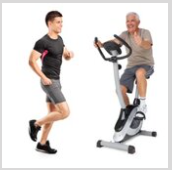Osteoporosis and Physio
Osteoporosis is a widespread issue within Australia, almost 1 million people are affected in the country. It is considered a “silent disease” as patients usually have no symptoms until a fracture occurs. We have spoken to a number of General Practitioners and realised that many are keen to understand further how physiotherapy can assist patients suffering from the disease. Hence, we decided to put together this information to help GPs with their decision-making and enable patients to access the best evidence-based care.
Osteoporosis and exercise
As people age, bone density reduces rapidly. For men above 45-50 years of age, bone density decreases by 0.5 -1% per year, while post-menopause women’s bone density drops a staggering 1-2% per year.
On the other side, men and women who participate in a regular and appropriate level of exercise and physical activities can maintain or even grow (1-2%) bone density. On top of that, exercises improve muscle mass, strength, balance and coordination to help prevent falls and maintain general health.





Volume and recommendation
-
Regular exercises = at least 3 times per week
-
Progression: Parameters of exercises, which may include the amount, type, weight and repetition of exercises should increase appropriately over time to adequately challenge your body
-
Short and intensive: It is recommended to complete exercises in divided short sessions than one long session.
What can we do?
Our physiotherapist will assess a patient’s medical history, age and background. Together with our patients, we can establish a baseline physical capacity and set up goals for the short and long term. A thorough assessment is critical as every patient with osteoporosis has different treatments, needs and symptoms, a “one size fits all” approach is not necessarily effective. We would love our patients to enjoy and engage in the program in the clinic and in their normal outside lives.
The patient can expect an ongoing supervised physio program and a tailored self-management program. We recommend continuous participation for at least 12 months. During this period, we work alongside the patient in the weekly supervised exercise sessions.
The patient will also be provided self-management at home, which might include home-based exercises, gym exercises or hydrotherapy.
Our physiotherapist will monitor and review a patient every 6-month to determine changes in balance, posture and function.
Who is right for the treatment program?
-
People with osteoporosis or osteopenia
-
Female after menopause
-
Anyone aged over 50 with risk factors for osteoporosis
-
Family history of osteoporosis
